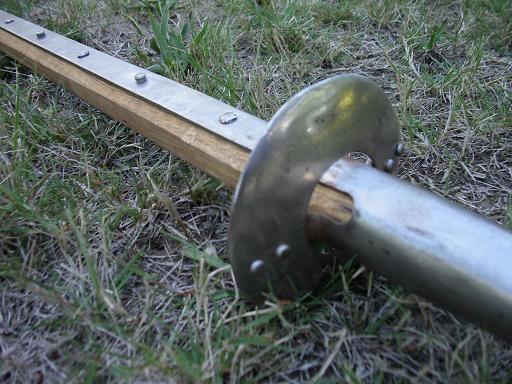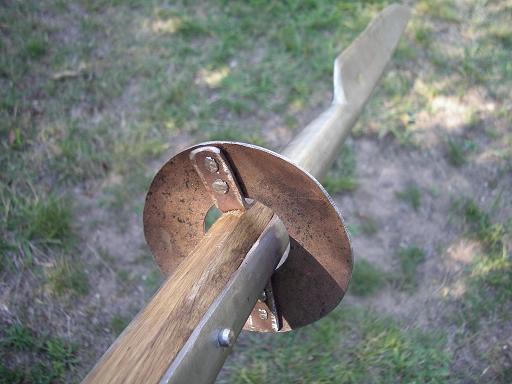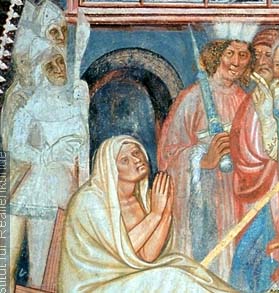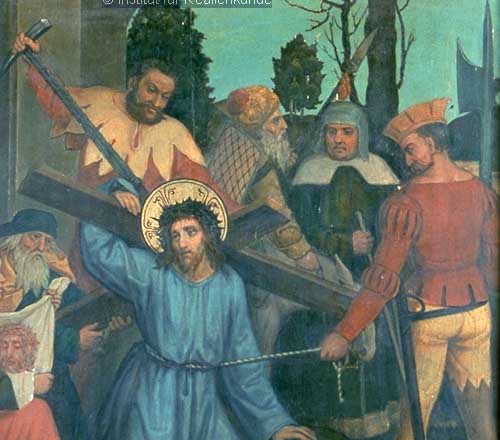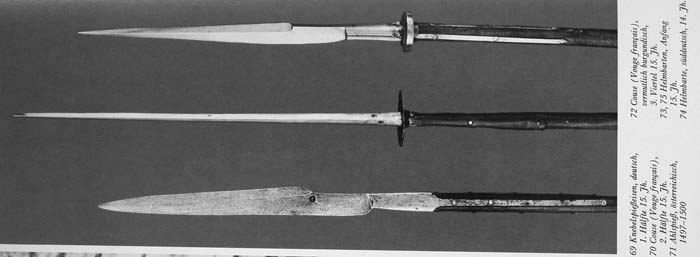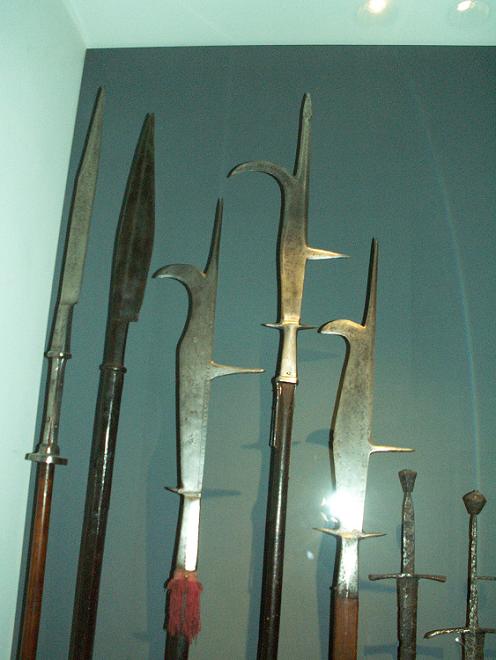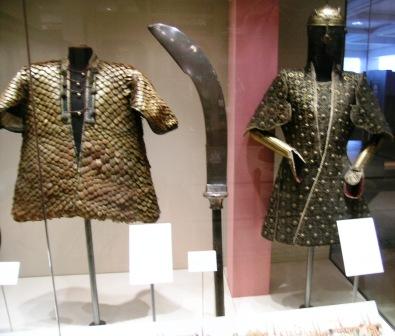Posts: 5,981 Location: Birmingham, Alabama
Tue 04 Mar, 2008 7:37 am
Looks good to me--like a late 15th c. vouge francais headed toward the couteau de breche form of ca. 1500. The main difference between the forms is that the VF seems to have been much thicker than the more knife-like CDB, maybe hafted shorter than the CDB and more focused on the thrust. Also, while the lower edge of the CDB is concave, forming a shallow hook, the VF tends to have a convex and upward-sloping lower edge, as you've done here.
There clearly are weapons that combine elements of both of these (modern) categories--having broad blade, convex lower edge and rondel. So, yours would have been right at home from mid-century up through the early part of the 16th. I've seen rondels on polearms in contemporary German/Austrian artwork from that later period. I'd guess that yours would look most at home ca. 1470, right around the period of those Froissart illustrations.
Here are three detailed contemporary depictions of VFs in the hands of elite guards ca. 1500. Notice especially the shape of the haft, the padding inside the rondel, the beveling of the blade (showing it's thickness), the spiked foot of the haft:
http://www.myArmoury.com/talk/viewtopic.php?t...e+francais
By coincidence, I've just dismounted my own CDB with an eye toward adding a rondel. In the spring a young man's fancy lightly turns to thoughts of hafted weapons....
